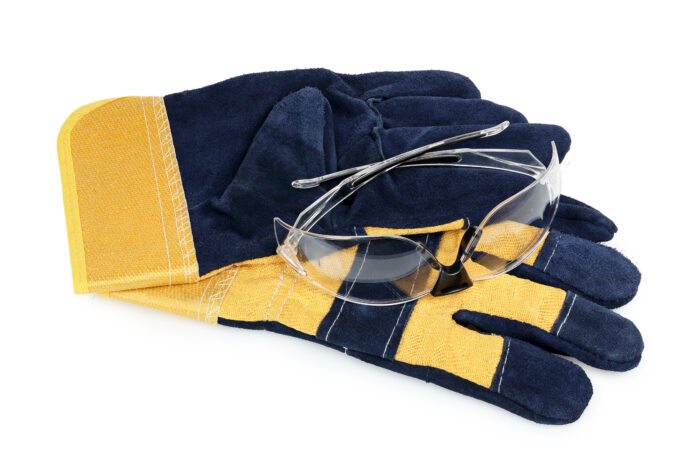Injection mold machines are an integral part of many facilities, and ensuring they’re in proper working order will ease a lot of hassle in the future. A little preventative maintenance goes a long way toward increasing the lifespan of your injection mold machines.
Proper maintenance support from a provider like Roberts Onsite can save companies two of their most important resources: time and money. Maintaining injection mold machines is a simple way to avoid costly repairs or breakdowns in the future.
The right equipment maintenance for your injection mold machines can keep the assembly line moving and avoid downtime. Preventative maintenance eliminates one less variable in a world of endless variables.
How do you maintain an injection molding machine?
Step 1: Safety Precautions
Prior to any inspection, PPE is required, such as gloves, safety glasses, and any other required safety equipment in your company’s guidelines.
Step 2: Preparation
Review the manufacturer's manual for the specific machine model you're inspecting. Familiarize yourself with the machine's components, functions, and maintenance requirements.
Gather the necessary tools and equipment such as inspection checklists, flashlight, lubricants, cleaning materials, and any specialized tools needed for the inspection.
With these measures in place, it’s time to perform the inspection on injection mold machines.
Step 3: Visual Inspection
Our eyes are one of the most important tools we have in this process, and it starts with a visual inspection of the equipment. Look for any signs of obvious wear, damage, or abnormal conditions.
The most common problem areas will involve the hydraulic system, electrical system, mechanical components, cooling system, and safety features. These systems are most prone to wear and break down over time.
- Hydraulic System: Inspect hoses, pipes, and hydraulic cylinders for leaks, cracks, or signs of wear. Check hydraulic fluid levels and cleanliness.
- Electrical System: Examine wiring, connectors, and control panels for any damage, fraying, or loose connections.
- Mechanical Components: Check the moving parts like the clamping unit, injection unit, and ejection system for any wear or misalignment. Inspect screws, bolts, and fasteners for tightness.
- Cooling System: Inspect the water cooling system for leaks, clogs, and proper flow. Ensure that cooling lines are not blocked.
- Safety Features: Verify that safety guards, interlocks, and emergency stop buttons are functioning properly.
There’s no such thing as being too thorough; take important steps like inspecting hoses and pipes, loose wiring and connectors, mis-aligned parts, loose fasteners or leaks. Any of these faults could lead to premature wear and tear on the machinery.
Step 4: Lubrication Inspection
“A well-oiled machine” isn’t just a saying, it’s something every owner should strive for. To ensure critical lubrication of machines, it is imperative to follow the manufacturers' recommendations:
- Check lubrication points as specified in the manufacturer's manual. Ensure that lubrication is adequate and not excessive.
- Lubricate the necessary components using the appropriate lubricants, following the manufacturer's recommendations
Step 5: Functional Testing
After inspecting, it’s time to move on to functional testing. This is when you put the machine through its paces to ensure all components are performing correctly. Be sure to test:
- Clamping Unit: Test the clamping force, open and close the mold, and observe any unusual sounds or movements.
- Injection Unit: Run a test cycle to observe the injection process. Check for consistent shot sizes, pressure, and speed.
- Ejection System: Test the ejection system to ensure proper ejection of molded parts.
- Heating and Cooling: Check the temperature control settings and ensure that heaters and cooling systems are functioning correctly.
Step 6: Document and note any abnormalities
It’s critical to document any abnormalities or defects throughout this process. Take the time to go through your checklist and mark off any defects or required maintenance tasks. With any components that require repair or maintenance, make careful note of their condition to consult with maintenance personnel.
Step 7: Maintenance and Repairs
If you identify any issues during the inspection, determine whether immediate repairs are necessary or if regular maintenance will suffice. Consult with maintenance personnel or supervisors to plan and execute any required repairs.
Step 8: Follow-Up
Lastly, perform ongoing follow-up inspections and adhere to your company’s regular maintenance schedule and the manufacturer’s recommendations. These inspections will lay the foundation for optimal performance of your injection mold machines as well as help prevent issues from escalating.
Always keep in mind that the specific steps and requirements for injection mold machine inspections may vary depending on the machine model, manufacturer guidelines, and industry standards. Always prioritize safety and adhere to your company's protocols while performing these inspections.
Roberts Onsite: The injection mold equipment maintenance experts
Take good care of your equipment with the right maintenance support, and it will take good care of you.
Even the most durable injection mold machines require regular maintenance, and trusting a preventative maintenance company like Roberts Onsite will set you on the right path. For expert preventative maintenance and equipment maintenance, contact the experts at Roberts Onsite today.


